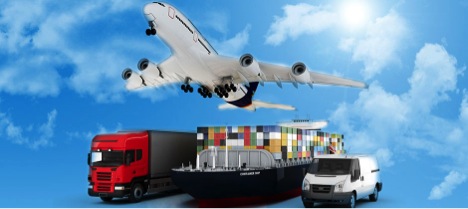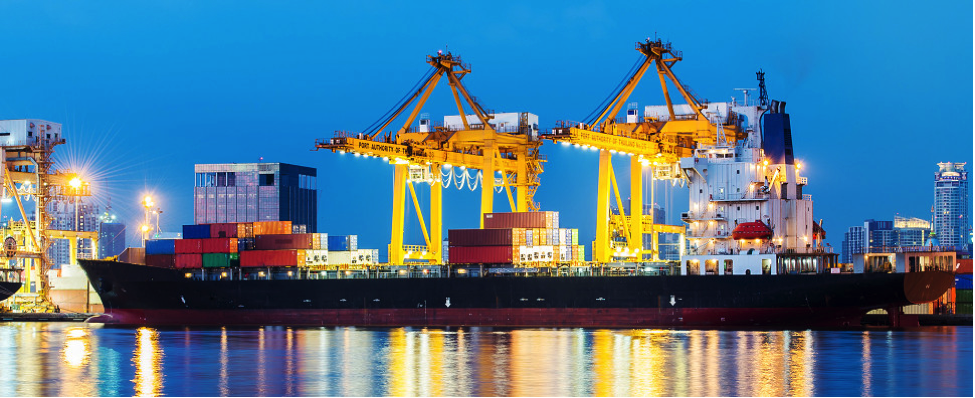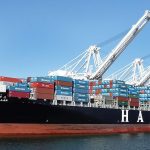Don’t Turn Your Overseas Shipment into a High Seas Adventure!
Shipping internationally is much more inherently challenging than shipping domestically; therefore, it is vitally important beforehand that you do the necessary research and strategic planning to ensure the success of your shipment.
One of the most important aspects to consider when planning an international shipment is how you are going to transport your goods.
To do this in the most cost-effective manner, you need to determine the various modes of transportation available (i.e. sea vs. air), their costs, the time each mode will take for your shipment to arrive, and the potential safety risks to your cargo—and then weigh the pros and cons of each.
Depending upon how quickly you need your shipment to arrive, you may have limited choices.

International Shipping air, ocean, truck, van
It’s important to keep in mind that delays can occur more frequently with international shipping than with domestic shipments (without it being the fault of the shipping company), and consequently you may need to build in extra time for unexpected delays when making your decision.
Keep in mind when considering costs that there will be fees to pay to Customs as well as Tariffs–and these fees can vary a great deal depending upon the value and nature of the products. Customs also has a variety of regulations as well as paperwork for shippers to complete.
USING THE RIGHT CARGO CONTROL AND PACKAGING TO PROTECT YOUR SHIPMENT
THE most important goal when shipping internationally is doing everything possible to ensure that your shipment arrives safely and free from injury.
The packaging methodology is different from that of regular household and domestic moves in that you often need to protect your shipments from the sea air as well as from the movement inside of containers. Therefore, it is vital to use absolutely dependable and strong Cargo Control to keep your cargo well restrained, as well as the right packaging to protect your goods from any sort of injury.
Nothing can provide you with a 100% guarantee that your shipment will arrive in perfect condition, which is why purchasing insurance is always a good idea. However, much can be done to help ensure the safety of your shipment during the packing process. Here are some ideas to keep in mind:
Corrugated:
The quality of one’s corrugated boxes and their liner boards always makes a significant difference when packing for any sort of move.
Moving boxes can be deceptive, as two boxes can appear similar to the untrained eye on the outside, but be very different in terms of their respective strength, durability, and ability to protect–especially during the ordeal of a major move.
The strength of a corrugated moving box is dependent upon many factors. These include the number and thickness of the flutes, the number of walls (is the box single wall, double wall or tri-wall), the wood fiber used during the manufacturing process, and the percentage of recycled vs. virgin paper. Each of these individual factors plays a role in determining the ultimate quality of your corrugated box.

international shipping cargo ship port
When shipping internationally, it’s even more essential to make absolutely sure that you are getting superior, professional-grade corrugated boxes that can withstand crushing and ripping during the stacking and moving process. You need boxes that have earned at least a 32 on the ECT Crush test.
There are several specialty corrugated boxes that international movers are finding to be particularly helpful. These include well-made dish-packs, wardrobe cartons, flat-screen TV boxes, mirror cartons, and sofa boxes. Also very helpful are 48 inch corrugated rolls and 4 X 8 sheets of corrugated.
If you are using an LDN container made from wood, rather than a corrugated box, make sure that you have a heat treated pallet, and that if you are using a type 2 lift van that it is of excellent quality and has received international approvals.
Packaging:
In addition to obtaining quality corrugated boxes, it is important to use quality protective packaging materials in preparation for an international shipment. Two excellent choices for wrapping are Kraft Paper and Orca Wrap.
Orca Wrap is a foam laminate sheet made from polypropylene that has the superb advantage of ventilation holes in the foam. This gives the packaging the ability to actually “breath,” which helps prevent off-gassing and your cargo from “sweating.” Orca Wrap also provides you with excellent cushioning protection.
It is also important not to use 1 ply paper padding but rather a paper pad that is at least 2 ply. 3 ply is even more effective, and some movers will double-up on their use of the 2 ply, adding additional layers of protection while still using 2 ply. As in the case when you select your corrugated boxes, you also want to look for quality paper pads that are dependable and whose sheets you can trust to be uniform and of consistent size.
Finally, furniture moving pads may also be of great help in ensuring the safety of your move.
The best type of moving pad is made from a poly-cotton blend as that found in the Dreadnaught Moving Pad, and when adhered to furnishings or objects with movers’ rubber bands, your shipment will receive a great deal of cushioning protection.
About Author:

Mark Hildreth
Mark Hildreth has worked as the salesperson for New Haven Moving Equipment for over two decades and is a former mover and current consultant and speaker to movers on many topics related to domestic and international moving and shipping. Connect via toll free (855) 557-7237 OR on Facebook & YouTube.
If you would like to write a guest post or share an infographic or video that relates to international shipping, please contact us!
Source: UC Blog





